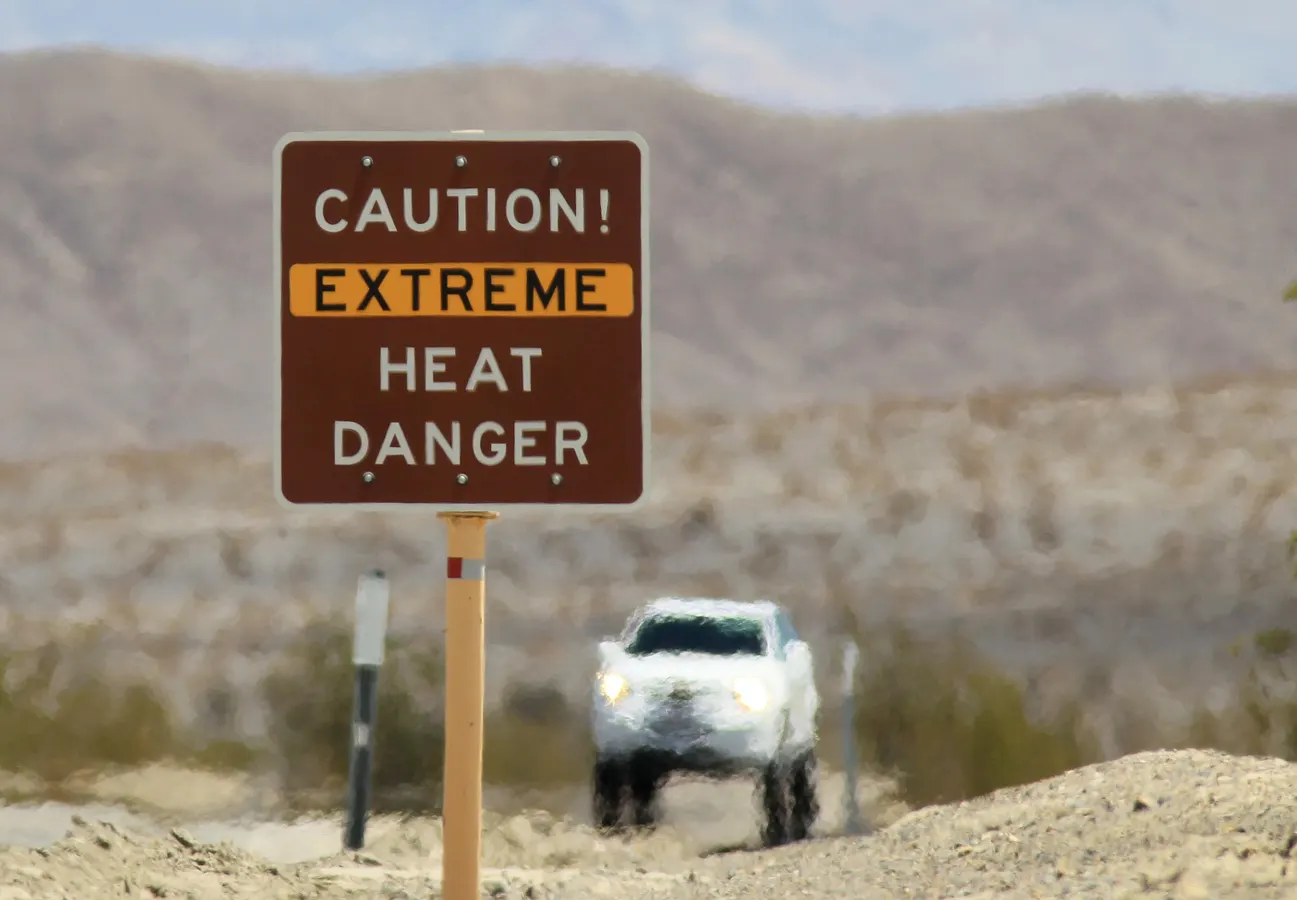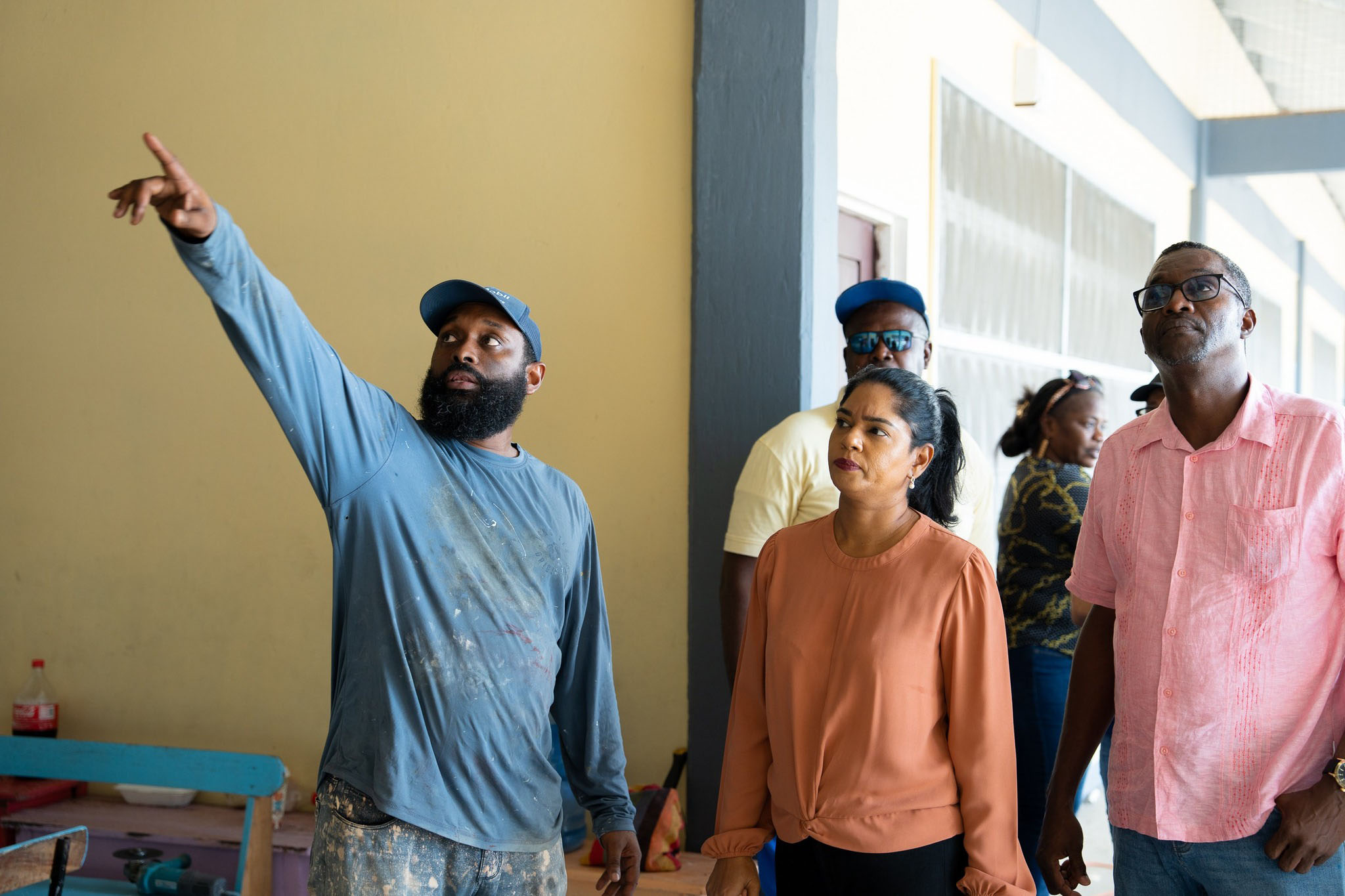Copyright forbes

DEATH VALLEY NATIONAL PARK, CA JULY 14: Heat waves rise near a heat danger warning sign on the eve of the AdventurCORPS Badwater 135 ultra-marathon race on July 14, 2013 in Death Valley National Park, California. Billed as the toughest footrace in the world, the 36th annual Badwater 135 starts at Badwater Basin in Death Valley, 280 feet below sea level, where athletes begin a 135-mile non-stop run over three mountain ranges in extreme mid-summer desert heat to finish at 8,350-foot near Mount Whitney for a total cumulative vertical ascent of 13,000 feet. July 10 marked the 100-year anniversary of the all-time hottest world record temperature of 134 degrees, set in Death Valley where the average high in July is 116. A total of 96 competitors from 22 nations are attempting the run which equals about five back-to-back marathons. Previous winners have completed all 135 miles in slightly less than 24 hours. (Photo by David McNew/Getty Images) Getty Images When “just a few degrees” Becomes Dangerous - Living with Extreme Heat A few degrees may not sound like much. But a change from 33°C to 37°C can mean the difference between a functioning city and a crisis. Extreme heat is already here and its presence is growing globally. It’s the sometimes invisible climate risk. It doesn’t flatten buildings or sweep away cars so we rarely see it in the headlines. Instead, it quietly overwhelms our bodies, economies and infrastructure. According to the World Health Organization (WHO) from 2000 to 2019 nearly half a million people died annually from heat exposure. Likely, that number will continue to climb as global temperatures rise. We’ve spent decades trying to reduce emissions - and have many decades ahead of us on this journey. But now, we must also build defenses. Safeguarding against extreme heat falls squarely in the climate adaptation category, which has been chronically under-funded and under-discussed. Yet adaptation isn’t surrender - it’s strategy. Even more, it’s tantamount to survival. Navigating the heat age we are now in will depend not just on emissions avoidance and removal, but on how fast we learn to live with the heat that’s already here. Extreme heat is ushering in a new sense of normalcy, forcing us to rethink everything. The Physics of a Few Degrees MORE FOR YOU The danger of extreme heat lies in its deceptive simplicity. A rise of “just a few degrees” may sound trivial, but scientifically, it is a significant shift in risk. According to the Intergovernmental Panel on Climate Change (IPCC), even a global average increase of 1.5°C transforms local realities: heatwaves that used to occur once a century will strike roughly every five years. The relationship between global averages and local extremes is nonlinear. In other words, even small, seemingly negligible changes in global average temperatures create much larger local shocks. And our physiology as humans makes things harder. Once the wet-bulb temperature, which determines how well our bodies can cool through sweat, reaches around 35°C (95 Farenheit), even a healthy person sitting in the shade cannot cool down fast enough to survive for long. Studies like the HEAT Project suggest that real-world danger may in fact start at even lower temperature, around 30–32°C wet-bulb. And with global average temperatures set to increase for the foreseeable future, those levels can make large parts of the planet at least intermittently uninhabitable. The Bare Necessities are Under Threat Indeed, we live in a diverse, unequal world. Yet there are a few common denominators that link us together. We all need food, water, air and shelter. And extreme heat is upending each. Let’s take each one by one. Food: Reduced food availability and increased prices are more likely in a warming planet. Under these circumstances food insecurity, especially in vulnerable populations, worsens. Heat stresses crops by causing plant mortality, stunted development, and reduced yield quality. It can also harm livestock through more frequent illness, which can lead to increased mortality. Fisheries too can suffer as the water’s temperature increases. Water: A hotter planet can lead to extreme water scarcity. Heat increases evaporation rates from soil and water bodies, leading to less water for drinking and agriculture. Rising temperatures also degrade water quality as warmer waters can create algal blooms and reduce oxygen levels, affecting fisheries and potable water sources. Air: Rising heat worsens air pollution by increasing ground-level ozone and particulate matter. Put more simply, hotter air traps pollutants longer, which can raise hospitalization rates for asthma and other respiratory issues and heart-related illnesses, particularly for vulnerable groups like children and the elderly. And this also has dire implications for outdoor workers, which totaled over one billion as of 2023. Shelter: Last but not least, extreme heat tests the stability of housing. And traditional building materials and infrastructure like roads and power lines degrade or fail under high heat. Low-income communities often face the worst conditions. Power grid failures during heat waves cut essential cooling, forcing people to endure dangerously hot indoor environments. With the bare necessities at risk, extreme heat will force us to reconsider one of the most fundamental aspects of human life: the ability to be outdoors. In essence, heat is rewriting the human schedule. What we once took for granted - that daily life unfolds comfortably under the open sky - may no longer hold true for more and more of us. For billions, “going outside” is the backbone of work, recreation, and social life. And it’s predicated on having a safe, sanitary and comfortable experience while outside. But outdoor activity could become unsafe for growing portions of the year. This changes everything - from how cities schedule public events to how companies manage supply chains and governments initiate and implement infrastructure projects. Schools shorten outdoor playtime; construction firms shift work to dawn and dusk; tourism seasons invert. The Economic Shock No One’s Pricing Extreme heat is already a disruptive market force. The World Health Organization notes that worker productivity decreases by 2–3% for every degree increase beyond 20 °C in wet-bulb globe temperature. In Bangladesh, where maximum temperatures rose just over one degree in recent years, the World Bank estimates billions of dollars in annual GDP losses tied directly to heat-induced slowdowns in labor. It’s a chain reaction: fewer safe working hours mean less output, less income, and weaker supply chains. The IMF has documented that persistent high temperatures correlate with lower GDP growth in hot regions, widening global inequality. For wealthy economies, it means rising costs of cooling and infrastructure repair; for poorer ones, it’s a threat to survival. And rising demand for air conditioning drives up electricity use, stressing grids that often fail during peak heat. When outages hit, cooling stops and lives are at risk. The Unequal Heat Divide Extreme heat touches everyone, but its impacts are unequal. In the wealthiest neighborhoods, people retreat to air-conditioned homes and offices, driving up energy bills but staying safe. In low-income communities, especially those with tin roofs, little shade, or unreliable power, indoor temperatures can soar above 100°F (38°C). Outdoor workers - farmers, construction crews, delivery drivers - bear the brunt of exposure with few protections. Access to cooling is now a global measure of inequality. According to the International Energy Agency, fewer than one third of households globally have access to AC. But AC itself isn’t a simple fix: most units still use hydrofluorocarbons, which have thousands of times the warming potential of CO₂. While air conditioning access is expected to rise globally as standards of living improve, there is a real risk that rapid expansion of AC use, if unregulated, could accelerate warming even further. Arguably, the most sustainable cooling is passive: better insulation, reflective roofs, shaded streets, and natural ventilation — designing buildings and cities that stay cooler by design, not by machinery. Why We’re Not Talking About It So why doesn’t heat command the same attention as floods or fires? Simply put, we’ve been trained to think about climate change in averages and carbon, not in daily lived experience. Climate scientists and policymakers have rightly emphasized decarbonization, but that focus has created what some call “carbon tunnel vision” - reducing emissions is treated as the sole mission, while adaptation - preparing for the heat already locked into the system - gets sidelined. Even if the world hits “net zero” tomorrow, the legacy of past emissions means temperatures will keep climbing for decades. Adaptation is not an admission of defeat; it’s a matter of survival. The messaging doesn’t help either. The target of “1.5°C” (34.7°F) is vital but emotionally out of reach. For the public, it sounds like nothing to panic over. Yet that small shift conceals extremes that will upend daily life: nights too hot to sleep, cities too hot to walk in, economies too hot to function. We have to get the language around extreme heat right. Typically, climate communications efforts in general bounce between doomerism and optimism, too academic or too simple - failing to capture the nuance, reality and most importantly relevance of what climate risks mean to the general public. It’s easy when talking about extreme heat to go down a fatalistic rabbit hole. But our leaders will need to have a new language and messaging approach when tackling this issue. The old communications tactics simply have not worked and we need a new playbook. Adaptation Can Work - But Only When We Prioritize It Adaptation saves lives. In Ahmedabad, India, officials launched the world’s first Heat Action Plan in 2013 after a deadly heatwave. With simple, low-cost measures - early warning systems, public education campaigns, reflective roof paint, and designated cooling centers - the city was able to avoid more than one thousand deaths annually. Other cities have followed. Phoenix, Athens, and Los Angeles have appointed “Chief Heat Officers” to coordinate cross-departmental responses, mapping vulnerable neighborhoods, expanding shade coverage, and issuing real-time alerts. The WHO now provides global guidance for municipal Heat-Health Action Plans, emphasizing community preparedness, health-system surge capacity, and equity in access to cooling. And as a matter of fact, nature itself offers some of the most effective tools: trees, green roofs, and reflective surfaces can lower neighborhood temperatures by several degrees, according to EPA and Nature research. Urban greening cools air, improves mental health, and reduces pollution — a rare win-win in climate adaptation. The Frontier of Heat-Resilience A growing population of climate-tech startups across the globe are sprinting to fill the gap between what governments can deliver and what societies urgently need. These companies are developing new materials, digital analytics, adaptive building systems and wearable solutions, all aimed at reducing exposure to dangerous heat, improving human comfort and protecting critical systems. For example, in the built-environment sector, innovations such as cool roofs, reflective pavements and passive shading systems are being developed by startups and materials companies to lower urban heat islands and reduce cooling loads. And technologists are also creating garments and wearables that actively or passively cool the human body during very high heat and humidity events. These technologies don’t just reduce temperature - many of them help shift the nature of how we experience heat. They extend outdoor work hours, reduce the strain on power grids during heat waves, protect vulnerable populations in low-income neighborhoods and give cities resilience tools that pre-empt crises. But it’s not just about gadgets. The business model matters: heat-resilience innovations are being packaged as services - e.g. cooling as a service, thermal-resilience as a subscription - or as integrated systems of sensors + AI + real-time adaptation. For example, real-estate tech firms are deploying climate risk analytics platforms that help landlords and city authorities map heat exposure, prioritise retrofits and manage risk portfolios tied to extreme heat. The uptick in startups tackling extreme heat suggests that the sector is becoming an investable category. And for cities and corporations, this evolution could mean that a new category of vendor and partner is emerging. Leading in the Age of Heat This moment will require very different leadership in the public, private and civil society sectors. Extreme heat is a systemic risk requiring systemic solutions. And it’s more than an environmental issue; it’s a management and policy challenge that will define our era. Leadership in the heat era means investing in resilience. It’s a mixture of funding infrastructure we often overlook and take for granted - shaded bus stops, reflective pavements, reliable electricity and nature-based solutions - alongside new innovations that can help individuals, businesses and communities minimize and manage heat and the uncertainty that it brings. For CEOs, it means preparing supply chains for disruptions and protecting outdoor works when they can’t safely operate outdoors. For mayors, it means budgeting for cooling centers and resilient grids. For investors, it means understanding that climate risk is about operational continuity in a warming world. And for all leaders it means adequately educating your stakeholders on why extreme heat is a threat and what it means for them. We’ve spent too long hoping that people will understand and buy into climate risks, but extreme heat will force us to be much more intentional about how we inform one another of the task at hand. Language, tone, messenger and message all matter here. We’re playing a game of a few degrees. It may seem inconsequential, but there is ample evidence that suggests otherwise. And because every degree we fail to adapt to is a degree we pay for in lives, productivity, and infrastructure losses, extreme heat underscores the architectural, engineering and human well-being challenge of our era: we have to build for resilience, not just efficiency. Editorial StandardsReprints & Permissions



